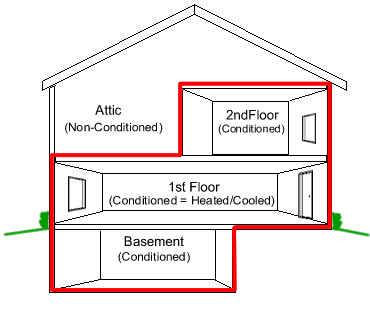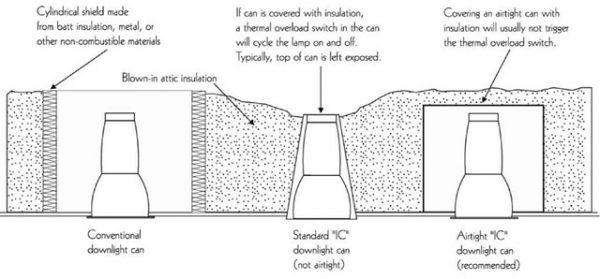Can Lights, the modern way to hang your ceiling lights. Dont get me wrong its a clean looks and I myself prefer them for the most part. Yea its nice to have a chandelier by the front door or a hanging fixture over the dinner table but for the other rooms and hall ways… Can lights are my go to. They collect less dust, they are non invasive as they really just blend in which can make your rooms seem slightly bigger, the only thing youll need to replace in the future is a light bulb instead of the entire light fixture, etc. Below is an example of both hanging lights and can lights.
In case you werent aware, the can light method is a way of recessing your lights in a housing/fixture within your ceiling. Depending on what is on the other side of your ceiling you might be alarmed. If its between floors (Basement and 1st Floor, 1st and 2nd Floor) you wont have access to inspect unless you have a drop ceiling with tiles but there might be dust in that void between floors. If the ceiling where the lights are is backing up to your attic then you’ve got some insulation, dust, dirt, allergens, etc.

Can lights are a prime example of where you get breaks in your thermal envelope. Your thermal envelope can be determined by the walls, ceilings, and floors that outline all of your conditioned living space. Refer to the image above. So when we have a break that means there are leaks and being leaky means 1 of 2 things: 1. Air inside the home is escaping, 2. Outside Air: Dust, dirt, allergens, insulation fibers, or whatever else is up against the back of the can light fixture can work its way back into the home. So you could be facing a wasted energy and poor IAQ crisis just because of some light fixtures. And while you probably think that the leaks are minimal, that might be true if you are looking at just one but odds are if you have one then there are many more, and the leakage quickly compounds. 1 small hole quickly becomes an army of small holes and that adds up to 1 large leak.

The image above shows a comparison of the different types of can light fixtures. As you can see, a conventional fixture is not meant to have insulation tight against it. The standard IC rated fixture can have insulation around it but should not cover the back so its a big step in terms of a tighter thermal envelope. Lastly the image on the right is an airtight IC rated fixture that performs as it sounds, minimal to no break in the thermal envelope because air isnt leaking out around it. They have begun making can light fixtures that are very well insulated but chances are you werent lucky enough to get much better than builder grade material. Look for the “IC Rated” fixtures if you plan to get them installed by a professional or if you are installing yourself. The abbreviation IC stands for Insulated Ceiling.
Ask your local HVAC company to stop by your house with an IR Camera or Smoke Puffer to see if you have a break in your thermal envelope where ever it may be; can lights, where your ceiling meets the walls, kneewalls, vaulted ceilings, skylights/ceiling windows, outlets on exterior walls, etc. Its likely a quick and easy fix so you are no longer wasting energy and you can remedy many poor IAQ issues by removing the leaks.
